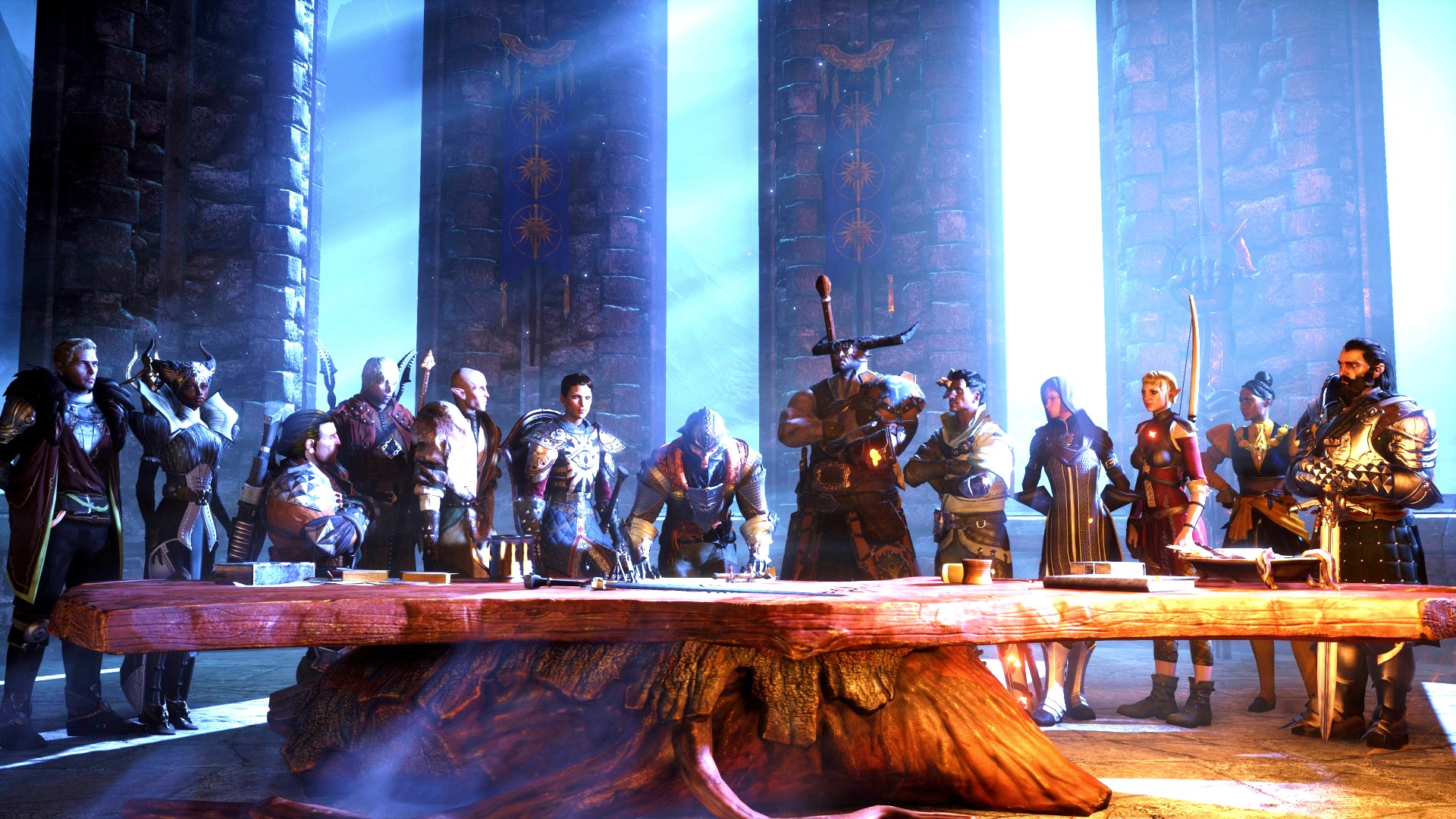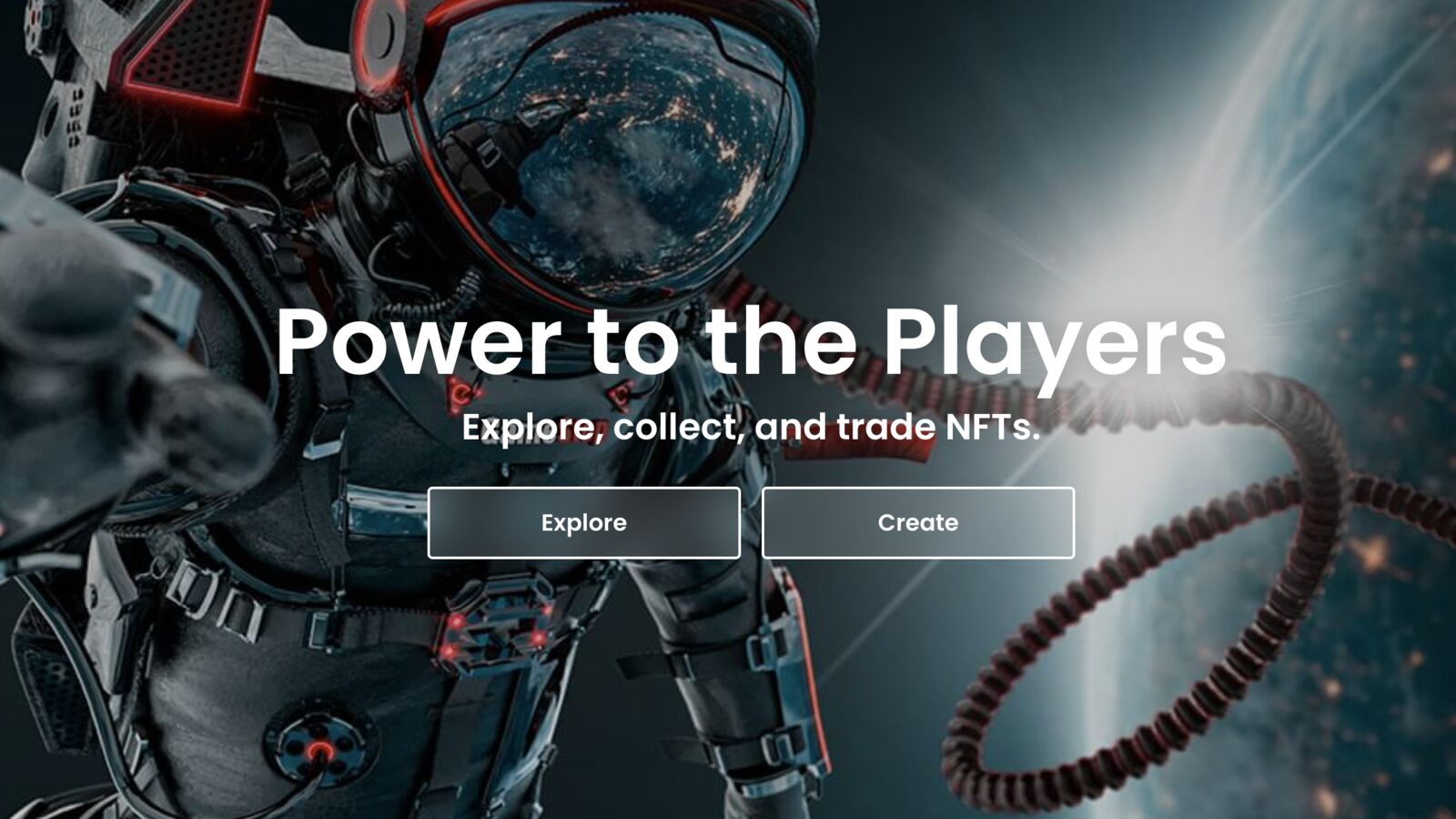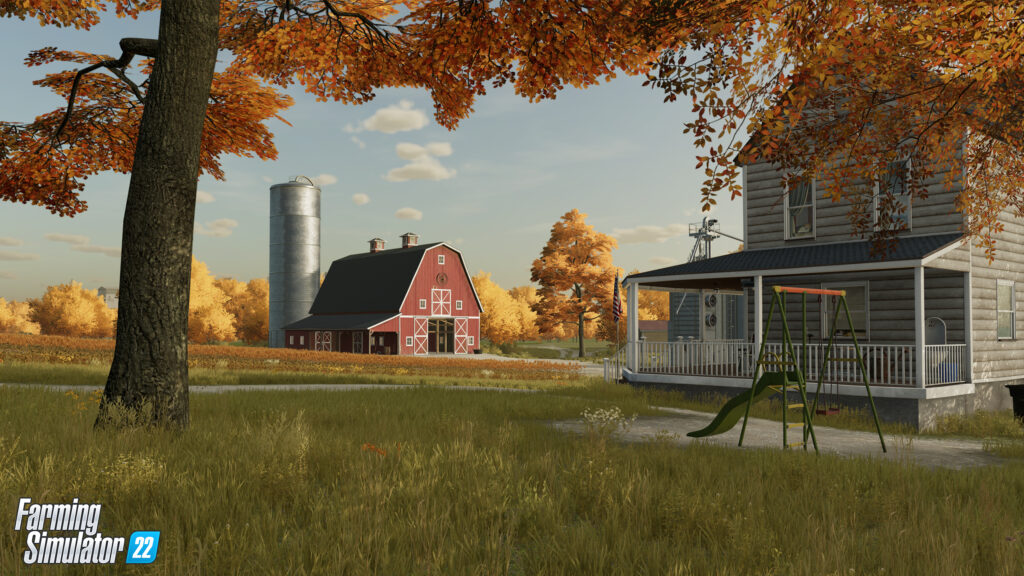
It’s been three long years for fans of Farming Simulator who’ve patiently waited for the latest instalment, and with the huge success of Clarkson’s Farm on Amazon, I’m sure there’s a lot of newcomers wanting to dip their toes into the world of farming too. It’s also the first time the series has graced the current-gen consoles, but has it been worth the wait?
Right off the bat, it’s clear that this is the biggest and most in-depth Farming Simulator yet, with plenty to please dedicated fans while also allowing newcomers to try their hand at a broad range of agricultural endeavours. Loading up a new game, players are presented with a choice of three maps: Elmcreek, a huge map located in the US’s mid-west, Haut-Beyleron, a medium sized map set in France, and the smaller Erlengrat map, which previously appeared in the Alpine DLC for Farming Simulator 19.
The biggest change for returning players will be that Seasons are no longer a separate mod, but an integrated feature. Regardless of what difficulty mode you chose, you’ll begin every game in late Summer and go from there. In general, Spring is where you spend most of your time preparing your fields and planting crops, Summer is where you look after them as they grow, and Autumn is for harvesting them.
Winter is a bit of an odd one out. There’s not a huge amount to do crop-wise, although the new weather system means that you might need to spend a bit of time with a snow plough to keep your farmyard clear and some grit on the roads. Each month lasts between 1 and 28 days in game, and I found it made more sense to play with just single day seasons as it doesn’t take too long to complete your jobs when your farm is small. Once I’d wrapped up most things I planned to do, I’d either accelerate time to 120x, or head to my farmhouse where you can go to sleep until it’s the next day.
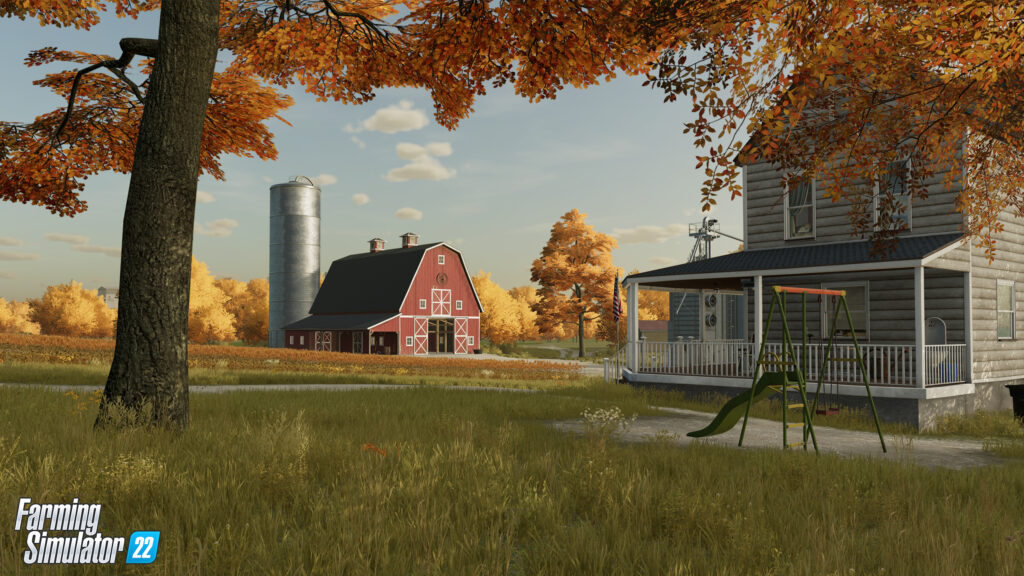
Winter is also the perfect time to focus on diversifying your operations. Forestry is something that you can take up whenever you have a moment spare, and lets you play with a large range of equipment; from chainsaws to huge machines that fell, strip and cut whole trees into perfectly sized logs in one go.
Tending to your animals is also an enjoyable way to pass the time. While chickens, pigs and sheep are relatively easy to look after – they just need water and food – cows create more of a challenge. In order to get maximum productivity out of them, you’ll need to delicately balance their diet, as well as ensuring they have enough straw for bedding. Get it right, and you’ll be able to sell the milk, or take advantage of the other big new feature: Production Chains.
The addition of Production Chains offers meaningful progression, allowing the player to create supply chains that transfer and convert raw materials and other goods into finished products. Milk, for example, can be sent to the dairy factory to produce chocolate when combined with sugar. From here, you can send it to the bakery to bake cakes (when also supplied with eggs, flour, strawberries and more sugar). Setting up the production chain takes quite a bit of work and planning, although there are simpler chains for things like clothing, which can be produced by combining cotton and wool from your sheep. While building up and mastering the production chains is something that will take several in-game years (unless you’re a very slow player), it’s a great way to work towards something other than just earning enough money for bigger and better machinery.
The biggest drawback is that the in-game tutorial and documentation is wholly inadequate for both new and old players alike. Previous games could suffer from the lack of direction and feel overwhelming, and this one is no different. The tutorial takes you through the basics, but doesn’t do a good enough job of explaining what to do and when, and the in-game help section is too high level to provide meaningful answers.

Elsewhere, the other new features on a smaller scale include greenhouses. These are a great way to produce a steady income and are easy to maintain as they just need water. You can either directly sell from the greenhouses, or manually collect and deliver the strawberries, tomatoes, and lettuce produce. It’s at these times that you’ll notice the game’s physics are much improved; handling pallets is much easier and the same goes for bales.
In terms of the new crops, sorghum is similar to wheat, while grapes and olives require their own specialist equipment, which means it’s not until you have quite a bit of money to spare that you can explore them. New players might be put off by the initial grind, but will be pleased to know that mods can make things much easier. One of the most popular additions to the Mod Hub is a ‘Government Subsidy’, which automatically adds either £100,000 or £100 million per year – the latter is essentially a sandbox mode. If you want to do things by the book, then you’re likely to want to take advantage of leasing equipment as it won’t be possible to buy it outright early on, or perhaps take on a loan from the bank.
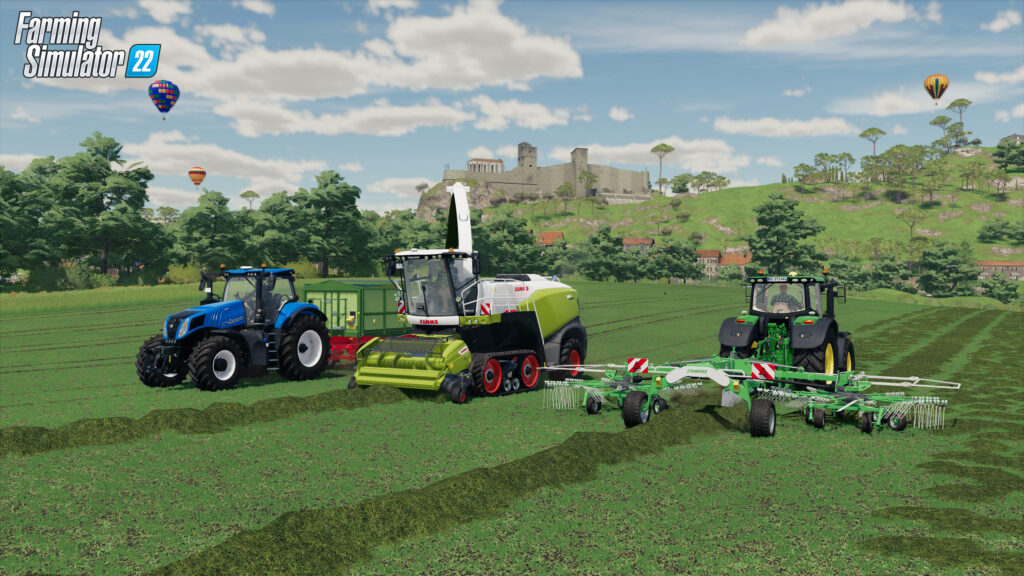
The mission system has been revamped, allowing you to take on multiple contracts at once, so you can set your AI helpers to work. This is a nice way to earn money in the background, and I’ve definitely noticed improvements to the AI. They’re still not quite on the level that popular mod Courseplay offered, but they don’t get caught up in trees and other objects while turning around in fields as much as they used to.
The three years of development have clearly been put to good use, with the game looking nicer than ever. There’s been improvements to the lighting, textures and details like wild animals running around help bring the game to life. Sitting in the cab of any vehicle and you’ll notice the dashboards are more detailed, while you can marvel at the complexity that some of these machines offer with hydraulics and lots other features that you really wouldn’t want to get your hand caught in!
